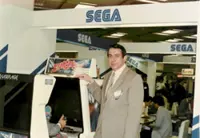Players can build relationships with characters such as Doctor Strange in 'Marvel's Midnight Suns'. — 2K Games/TNS
For a long time, DC wore the crown when it came to comic book games. Rocksteady Studios’ Arkham series was the first modern title that was legitimately in the game of the year discussion and entries such as Lego Batman and The Wolf Among Us were deserving of praise.
But in the past few years, Marvel has made strides. Developer Insomniac has done wonders with the Spider-Man franchise and Second Dinner beautifully translated the Marvel universe into a fast-paced card game. Now, Firaxis Games, the studio behind the Sid Meier’s Civilization series and the rebooted XCOM, has taken its hand at mutants and Avengers with surprisingly good results.
Already a subscriber? Log in
Save 30% OFF The Star Digital Access
Cancel anytime. Ad-free. Unlimited access with perks.





